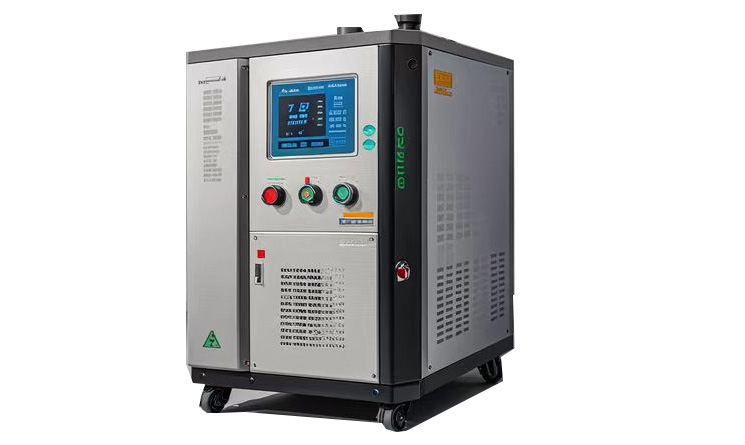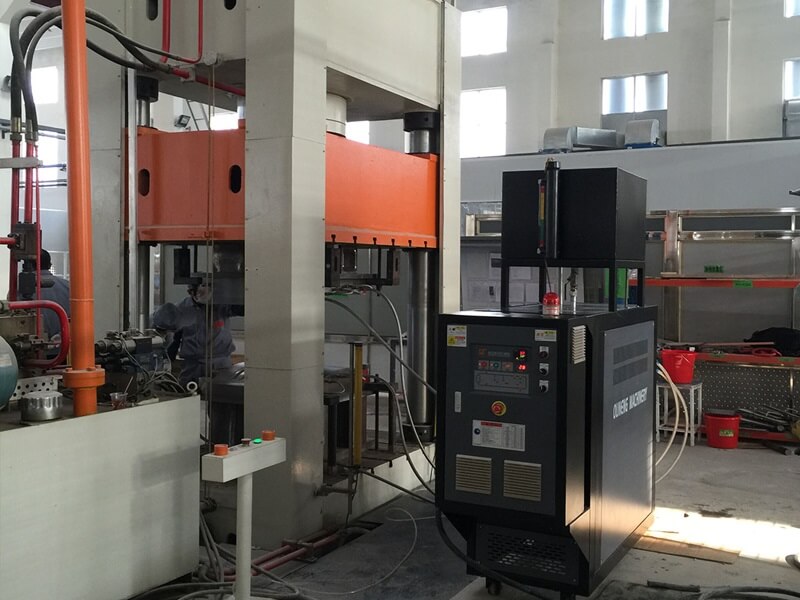Mold temperature controller, also known as mold temperature controller, was originally used in the temperature control industry of injection molds. Later, with the development of the machinery industry, it was used more and more widely. Today’s mold temperature controllers are generally divided into water temperature controllers and oil temperature controllers.
This article mainly introduces the role of the mold temperature controller in the hydroforming process.
1. Mold Temperature Control
The mold temperature controller achieves precise temperature control by heating and cooling the mold. Temperature control is crucial in hydroforming to ensure the molding quality, dimensional accuracy, and surface quality of hydroformed parts.
Thermal oil is the circulating medium. The heater (usually electric heating) in the mold temperature controller heats it. When the mold requires a higher temperature, the heater heats the circulating medium. A circulating pump transports it to the flow channel or heat exchanger inside the mold, increasing the mold temperature.
Conversely, when the mold temperature needs to be lowered, the mold temperature controller takes away the heat of the circulating medium through a cooling system (usually a heat exchanger or a chiller) to lower the mold temperature.
2. Improve Production Efficiency
Proper mold temperature control can shorten the cooling time and mold opening time of the hydraulic press, thereby improving production efficiency and output.
Stable mold temperature control can reduce the hydraulic press switching cycle and adjustment time, further saving production costs.
3. Improve the Quality of Hydraulically Formed Parts
Through precise mold temperature control, the thermal stress and deformation of hydraulically formed parts can be reduced, and their dimensional stability and surface quality can be improved.
Proper temperature control can also reduce the generation of internal defects in hydraulically formed parts and improve their overall quality.
4. Realize Dynamic Adjustment
The mold temperature controller is equipped with a precise temperature control system, including temperature sensors, controllers, and regulating valves.
The temperature sensor monitors the mold’s temperature in real-time. The controller automatically adjusts the heater and cooling system’s working state according to the preset temperature value and the actual temperature fed back by the sensor to ensure that the mold temperature remains within the set range.
5. Application in Molding in Specific Industries
Mold temperature controllers play an important role in plastic molding, rubber processing molding, carbon fiber molding, resin molding, and other processes. Their control accuracy can reach ±0.1 degrees Celsius.
The mold temperature controller not only improves production efficiency and the quality of hydraulically formed parts but also reduces production costs through precise mold temperature control during the hydraulic forming process. It is an indispensable and important equipment in the hydraulic forming process.
Zhengxi Hydraulics customizes production lines according to customer needs and uses appropriate mold temperature controller control systems to achieve linkage and closed-loop control. It dynamically adjusts the molding production process to improve customer production efficiency and the quality of hydraulically formed parts, reduce production costs, and achieve a win-win situation.
Post time: Feb-26-2025








